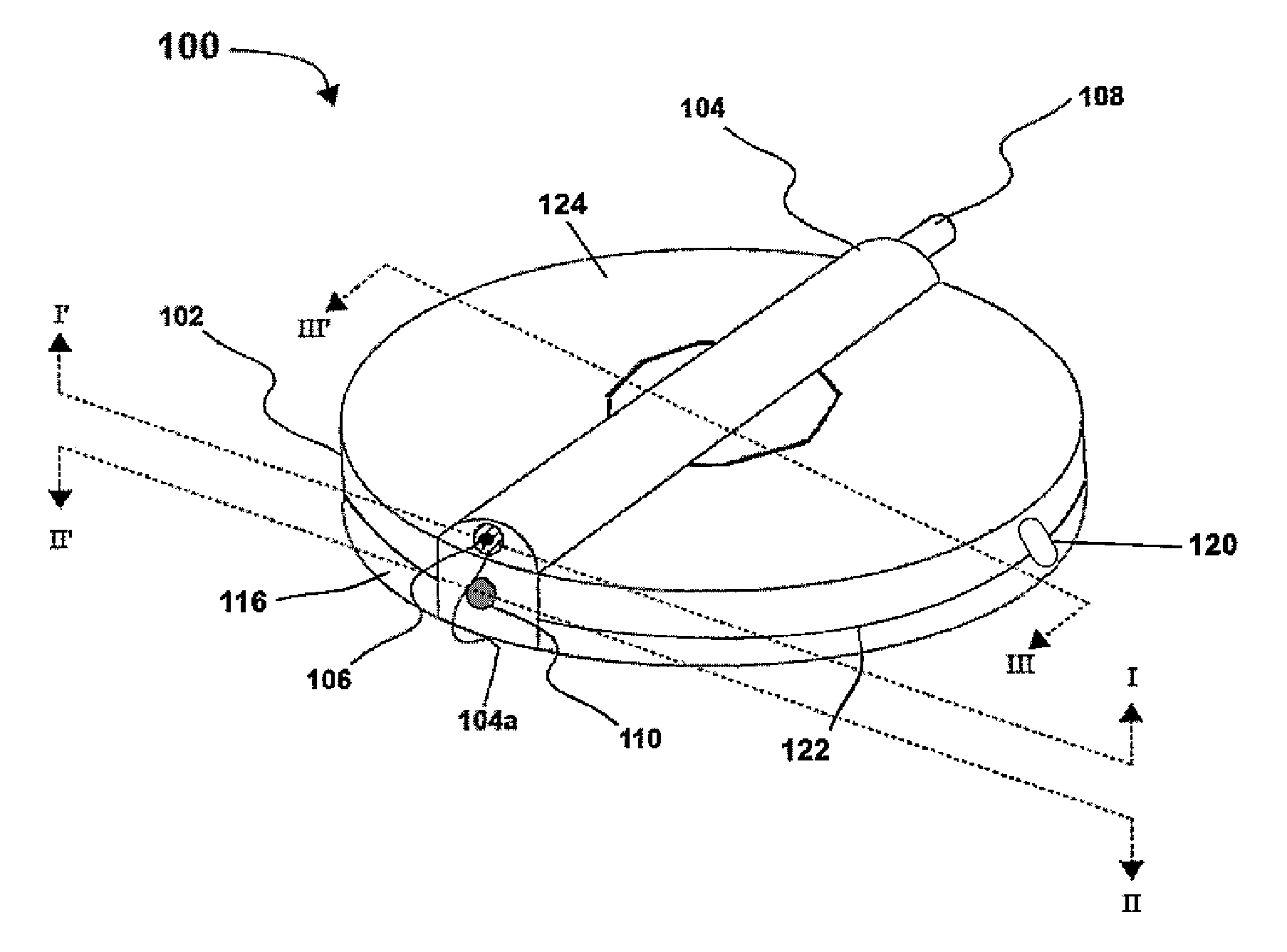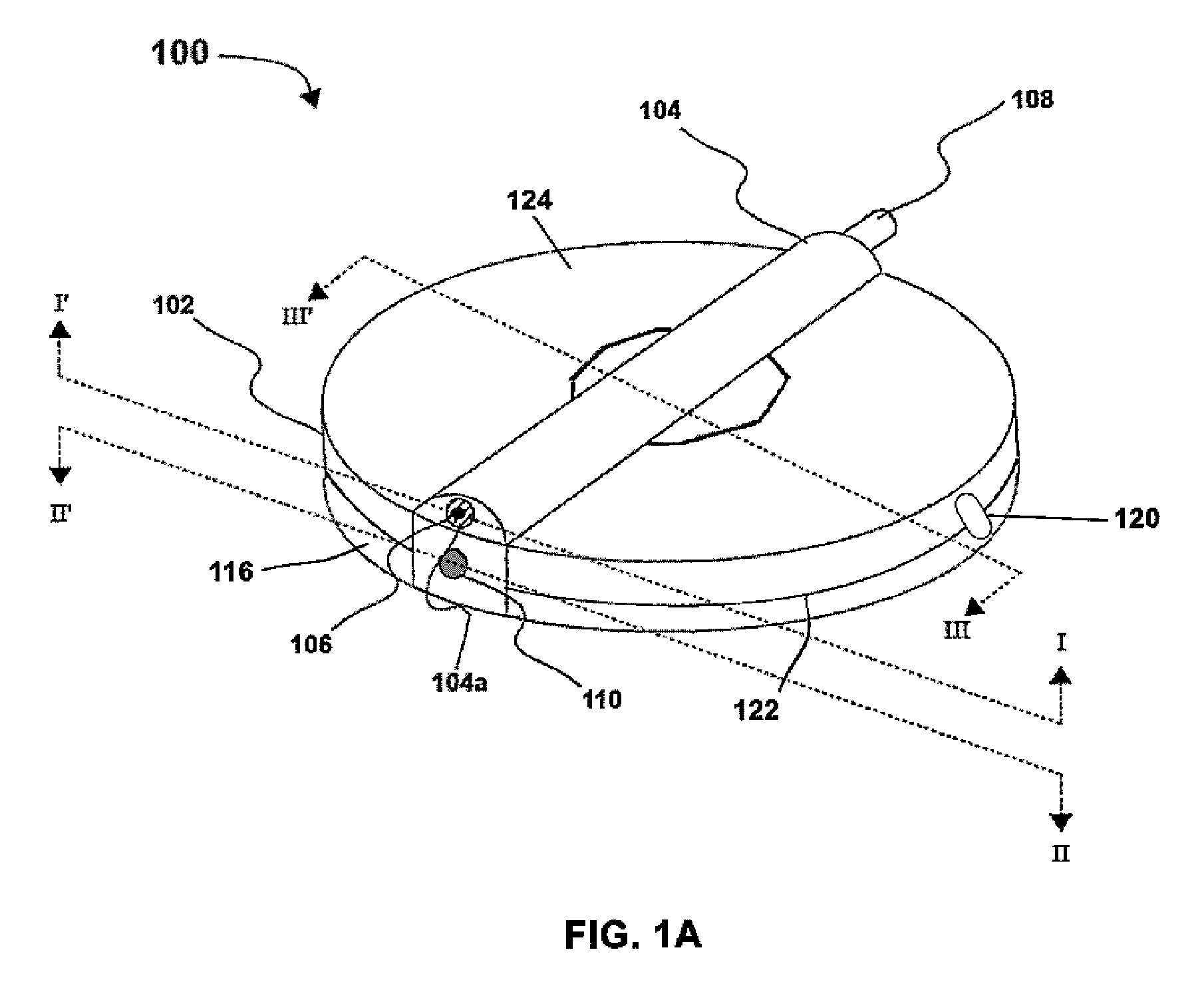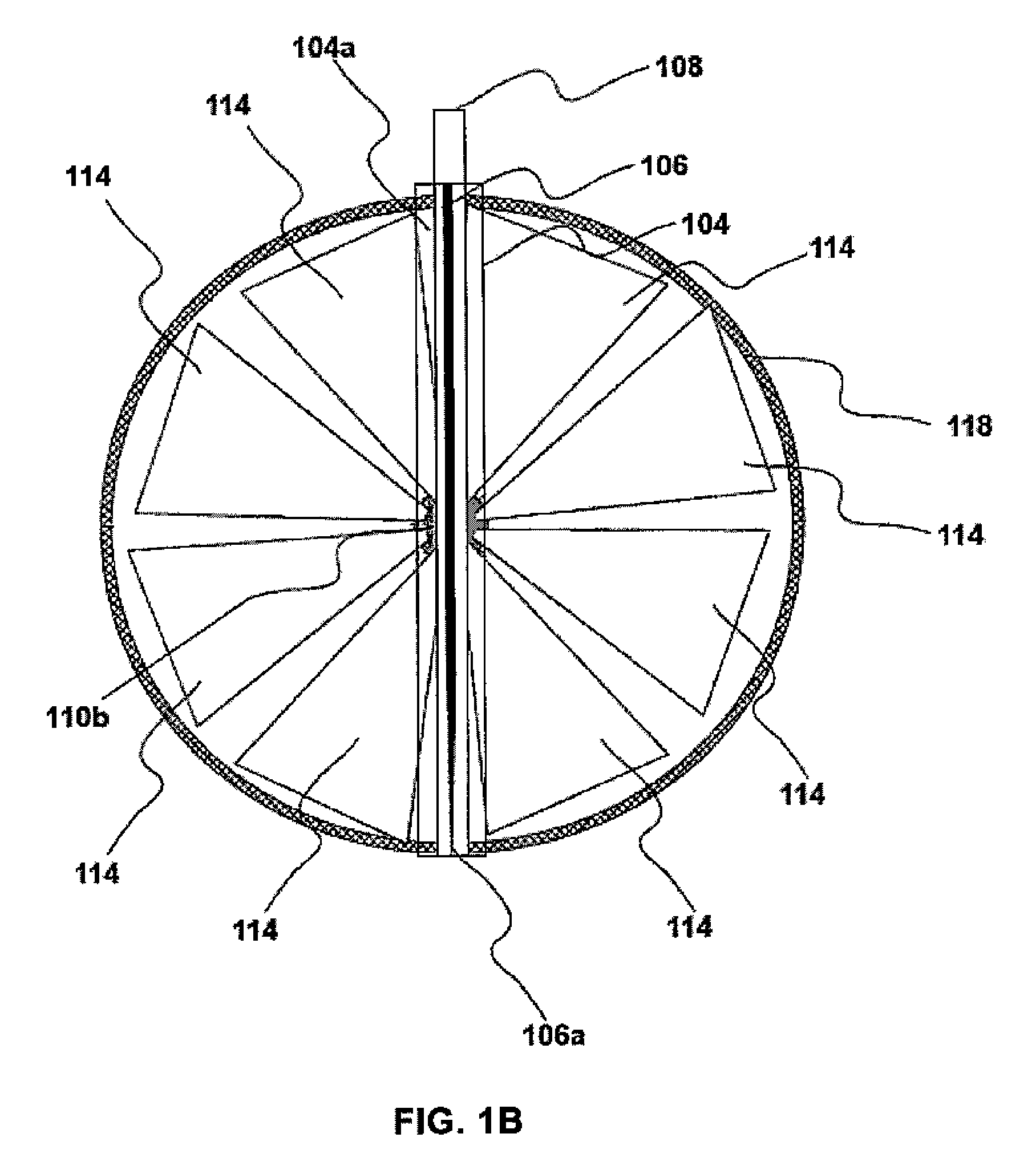Biological fluid sampling and storage apparatus for remote use
a biological fluid and remote use technology, applied in the field of biological fluid collection and storage, can solve the problems of time-consuming manual hole punching for sample removal and potential distortion, and achieve the effect of increasing drying speed and being easy to separa
- Summary
- Abstract
- Description
- Claims
- Application Information
AI Technical Summary
Benefits of technology
Problems solved by technology
Method used
Image
Examples
Embodiment Construction
[0030]As used herein, the term “capillary tube” refers to one or more narrow tubes of any length that moves a fluid at least partially through capillary action. The interior diameter of a tube is generally between about 0.5 and 5 mm in diameter, but may be larger or smaller depending on the nature of the sample to be collected, the physical composition of the tube, and any coating placed on the tube. The tube may also vary in diameter along its length, as by, for example, being wider or narrower at the “top” or “bottom.” One skilled in the art would be able to chose an optimal diameter and length for fluid transport with minimal experimentation. It is important to note herein that fluid may move through a “capillary tube” via other mechanisms as well, such as by gravity or by pressure differential, and that these mechanisms may be responsible for more motivational force than the capillary action within the capillary tube alone. It is intended that such tubes be included within our d...
PUM
| Property | Measurement | Unit |
|---|---|---|
| diameter | aaaaa | aaaaa |
| diameter | aaaaa | aaaaa |
| diameter | aaaaa | aaaaa |
Abstract
Description
Claims
Application Information
 Login to View More
Login to View More - R&D
- Intellectual Property
- Life Sciences
- Materials
- Tech Scout
- Unparalleled Data Quality
- Higher Quality Content
- 60% Fewer Hallucinations
Browse by: Latest US Patents, China's latest patents, Technical Efficacy Thesaurus, Application Domain, Technology Topic, Popular Technical Reports.
© 2025 PatSnap. All rights reserved.Legal|Privacy policy|Modern Slavery Act Transparency Statement|Sitemap|About US| Contact US: help@patsnap.com



